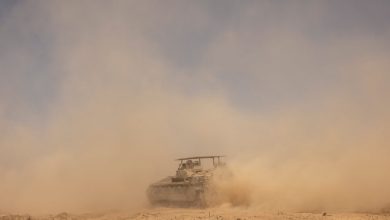Where to Take the Waters: A U.S. Hot Springs Guide

Even years later, I can call up the memory of easing into the piping hot, silty waters of Travertine Hot Springs in Mono County, Calif. Sliding in, I took a sharp intake of breath at the water’s steaming temperature, a contrast to the cold mountain air on my shoulders. I felt the squelch of mud between my toes and a gleeful relaxation of my muscles, taut and aching after days of hiking the Eastern Sierra Nevada range. As the golden glow of a late summer sunset gave way to a moonless, star-filled sky, I embraced an increasingly necessary, elusive sensation of absolute calm.
Therein lies the magic of hot springs, mineral-rich water heated by the earth’s core and bubbling to the surface. Some, like the springs at Yellowstone National Park, are too hot to touch, with some waters exceeding 250 degrees Fahrenheit. But many, cooled naturally or by clever construction, have been used for bathing, as medicine and as community gathering places, for millenniums.
In the United States, rich, warm mineral waters can be found everywhere from luxurious spas to rustic, clothing-optional mud pits, and the pull of these mineral waters has always been potent. Towns including Saratoga Springs, N.Y., and Calistoga, Calif., plus national parks like Yellowstone and Hot Springs National Park in Arkansas owe much of their early tourism draw to hot springs.
The basic premise: That the minerals found in the water, which vary by location and can include iron, lithium and sulfur (that last one lends some springs a distinct, rotten egg odor), can help cure or at least relieve a variety of ailments from rheumatic conditions to inflammation. A renewed interest in wellness tourism worldwide, plus the rise in popularity of outdoor recreation because of the pandemic, have hot springs poised for a 21st-century revival.
“You can find wild stories of people being brought back to life,” said Jeff Birkby, a geothermal energy consultant and the author of several guides on the hot springs of Montana, Wyoming, Washington and Oregon. (The Hot Springs of America website has also cataloged over 200 resorts in the U.S.) Mr. Birkby is “agnostic” when it comes to miracle cures, he said, “but I’ll say that I love soaking in hot springs. I love the way I feel.”
Inspired to “take the waters” yourself? Here’s where and how to get started.
In the West
The majority of accessible hot springs in the country can be found in the Western U.S., thanks to long-ago tectonic activity: Cracks in the earth’s surface, which tend to exist near fault lines and often in mountain valleys, allow hot water to bubble to the surface and emerge as a spring. Many resorts and resort towns got their start during the Gold Rush in the mid-19th century, as a destination for tired miners to wash their clothes, soak their aching bodies and, occasionally, experience a miraculous cure or two of their own. Others opened after the Civil War.
Nowadays, hot springs and spa offerings go hand and hand. In Calistoga, Dr. Wilkinson’s Backyard Resort & Mineral Springs reopened last summer after a renovation that includes a new restaurant with kombucha on tap and a wide selection of Napa Valley wines. The resort has 50 midcentury guest rooms and spa treatments ranging from mud baths to massages with CBD-enhanced oils, along with three mineral pools and eight mineral baths.
But there’s no shortage of stylish, destination-worthy springs in the West, including Castle Hot Springs in Arizona, Ojo Caliente in New Mexico and Dunton Hot Springs in Colorado, where a ghost town has been transformed into a resort.
Looking to hot springs hop, perhaps with some spa services on the side? Visit a bona fide hot springs town, like Steamboat Springs, Colo., Hot Springs, Mont., or head to Wyoming’s Hot Springs County, where ample amounts of mineral-rich water has led many resorts to crop up in a relatively close radius. The city of Desert Hot Springs, in California’s Coachella Valley, is another worthy destination, with plentiful soaking options ranging from retro to plant-filled oases.
But sometimes, there’s no beating the simple pleasure of soaking in hot water in a rustic, natural environment, where the amenities are few and swimsuits are usually optional. Travertine Hot Springs in Bridgeport, Calif., the site of my blissful post-camping soak, is a prime example of a more rustic kind of hot spring; Goldmyer Hot Springs near Washington’s Cascade Mountains limit entry to 20 people per day and require a four-and-a-half mile hike to access the springs. While there are few “secrets” in the internet age, rustic springs that require some effort to access often come with seclusion, and the opportunity to be surrounded by nature while you soak.
When visiting any hot spring, particularly those with limited services, take extra care to leave no trace — overuse, littering and poor maintenance can lead to closures.
In the East
Hot springs offerings in the Eastern U.S. are decidedly less numerous than in the West. But what Eastern hot springs lack in quantity, they make up for in stature. At Saratoga Springs, N.Y., home of the Saratoga Spa State Park, you can find the Roosevelt Baths & Spa in the Gideon Putnam hotel. Preserved by President Franklin D. Roosevelt in 1935 as part of a New Deal initiative, the waters have been a major draw to the area throughout the 20th century (and now can be paired with massage services, body treatments and more).
Travel Trends That Will Define 2022
Looking ahead. As governments across the world loosen coronavirus restrictions, the travel industry hopes this will be the year that travel comes roaring back. Here is what to expect:
Air travel. Many more passengers are expected to fly compared to last year. You’ll still need to check the latest entry requirements, and wear a mask for now. But more destinations will be within reach as countries reopen to tourists.
Lodging. During the pandemic, many travelers discovered the privacy offered by rental residences. Hotels hope to compete again by offering stylish extended-stay properties, sustainable options, rooftop bars and co-working spaces.
Rental cars. Travelers can expect higher prices, and older cars with high mileage, since companies still haven’t been able to expand their fleets. Seeking an alternative? Car-sharing platforms might be a more affordable option.
Cruises. Despite a bumpy start to the year, thanks to Omicron’s surge, demand for cruises remains high. Luxury expedition voyages are particularly appealing right now, because they typically sail on smaller ships and steer away from crowded destinations.
Destinations. Cities are officially back: Travelers are eager to dive into the sights, bites and sounds of a metropolis like Parisor New York. For a more relaxing time, some resorts in the U.S. are pioneering an almost all-inclusive model that takes the guesswork out of planning a vacation.
Experiences. Travel options centered around sexual wellness (think couples retreats and beachfront sessions with intimacy coaches) are growing popular. Trips with an educational bent, meanwhile, are increasingly sought after by families with children.
Roosevelt was far from the first president to seek the healing benefits of hot springs. Thomas Jefferson allegedly spent 22 days at the Gentlemen’s Pool House in Hot Springs, Va., which is now a part of the Omni Homestead Resort. The original pool house, built in 1791, is reportedly the oldest spa structure in the U.S., and is being rehabilitated with a planned reopening later this year.
George Washington didn’t need any such frills when he’d seek out a soak in Berkeley Springs, W.Va., which he first visited as a 16-year-old assistant to a land surveyor. Berkeley Springs State Park has recreated “Washington’s Bathtub” (and hosts an annual celebration in its honor every March), alongside more modern bathing offerings at the park’s Roman and Main bathhouses. President Andrew Jackson passed legislation to protect the area that is now Hot Springs National Park in Hot Springs, Ark., in 1832 (technically predating Yellowstone by 40 years). While there are no longer any opportunities to bathe outdoors, there are places to drink and touch the water and two locations for soaking on the park’s historic Bathhouse Row.
Hot water and green energy
If instant relaxation and healing possibilities weren’t big enough selling points, some hot springs have integrated geothermal technology into their facilities.
With an outdoor lake, an indoor pool, and indoor and outdoor hot tubs, Chena Hot Springs Resort, in Fairbanks, Alaska, is at the forefront of the use of alternative energy. Happened on by gold miners in 1905, Chena now uses geothermal energy to power the resort as well as maintain an ice museum (in the winter and the summer) and grow hydroponic produce. The commitment to geothermal energy has allowed the resort to stay open year-round and remain profitable, said Javier Villasenor-Gaona, Chena’s vice president of marketing, and the resort offers two free daily tours for guests interested in learning more.
Chico Hot Springs in Pray, Mont., also makes use of geothermal techniques, using runoff from its hot springs to irrigate and warm their gardens, extending their growing season by a few months. The springs also heat one of the two greenhouses on the property (one of which boasts a fruiting banana tree), along with a number of resort buildings.

52 Places for a Changed World
The 2022 list highlights places around the globe where travelers can be part of the solution.
Follow New York Times Travel on Instagram, Twitter and Facebook. And sign up for our weekly Travel Dispatch newsletter to receive expert tips on traveling smarter and inspiration for your next vacation. Dreaming up a future getaway or just armchair traveling? Check out our 52 Places list for 2022.



